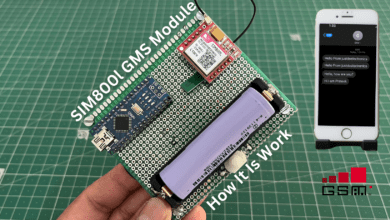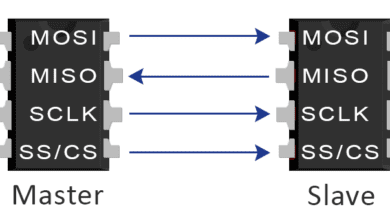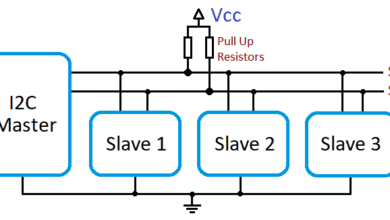
Understand LIN Communication Protocol
Introduction
The Local Interconnect Network (LIN) protocol is a widely used communication standard primarily designed for automotive applications. It provides a cost-effective and reliable solution for connecting various electronic control units (ECUs) within a vehicle, facilitating communication between them. This article aims to provide a comprehensive explanation of the LIN protocol, its key features, and its application in the automotive industry.
DATA FRAME Of LIN
A LIN frame, also known as a LIN message frame, is a fundamental unit of data exchange in the LIN (Local Interconnect Network) protocol. It consists of a header and a response and is used to transmit information between the master node and the slave nodes in a LIN network.
Header
The header of a LIN frame contains important information about the message, including the sender, receiver, message type, and identification. Let’s explore each component in detail:
Identifier (ID)
- The ID field uniquely identifies the message within the LIN network. It helps the receiver determine which messages are relevant to it and should be processed.
Frame Type
- The frame type specifies the type of message being transmitted. There are several frame types defined in the LIN protocol, including event-triggered frames, unconditional frames, sporadic frames, and more. Each frame type serves a specific purpose and is used based on the communication requirements.
Checksum
- The header includes a checksum field used for error detection. It allows the receiver to verify the integrity of the message by performing a calculation on the received data and comparing it to the transmitted checksum.
Response
The response section of a LIN frame contains the actual data payload being transmitted. It can include control signals, sensor readings, commands, or any other relevant information depending on the purpose of the message.
MODE OF LIN
Sleep Mode
In Sleep mode, the node is in a low-power state and consumes minimal energy. Sleep mode is typically used when the node is idle or inactive, and there is no immediate need for communication. When in Sleep mode, the node does not actively participate in the LIN network and remains in a low-power standby state.
Sleep mode allows for power-saving benefits, especially in automotive applications where energy efficiency is essential. Nodes can be woken up from Sleep mode by specific events, such as receiving a wake-up signal on the LIN bus or through a local wake-up source like a button press.
Normal Mode
Normal mode is the primary mode of operation for LIN nodes during regular communication. In Normal mode, nodes actively participate in the LIN network, transmitting and receiving messages according to the predefined LIN schedule. Each node has a specific role, either as a master or a slave, and follows the communication protocols accordingly.
The master node initiates communication by transmitting messages (frames) to the slave nodes, and the slave nodes respond with their respective data. This mode allows for event-triggered communication, where nodes can send messages based on specific conditions or events, such as button presses or sensor readings.
Wake-Up Mode
Wake-Up mode is a transitional mode used to activate nodes from Sleep mode to Normal mode. When a wake-up signal is detected on the LIN bus, nodes enter Wake-Up mode, where they start to power up and prepare for normal communication. Wake-Up mode is designed to quickly transition nodes from low-power states to an active state, ensuring a timely response to wake-up events.
Key Features of CAN
- Low-Cost Implementation: LIN is known for its low-cost implementation compared to other communication protocols. It achieves this by utilizing a single wire for communication, reducing the complexity and cost of the wiring harness in vehicles. Additionally, LIN transceivers are cost-effective, contributing to the overall affordability of LIN-based systems.
- Serial Communication: LIN is a serial communication protocol, transmitting data sequentially bit by bit. This simplicity allows for easy integration into microcontrollers and other electronic control units (ECUs) with limited resources, making it well-suited for non-critical automotive systems.
- Master-Slave Architecture: LIN employs a master-slave architecture, where one node acts as the master and controls communication with multiple slave nodes. The master node initiates communication by sending messages to the slave nodes, and the slave nodes respond accordingly. This architecture allows for centralized control and efficient management of the network.
- Low Data Rate: LIN supports relatively low data rates compared to other protocols. It typically operates at speeds up to 20 kbps (kilobits per second), which is sufficient for non-real-time, non-critical applications such as body control modules, climate control, lighting control, and door modules. The lower data rate contributes to the overall cost-effectiveness of LIN-based systems.
- Synchronization and Time Division Multiplexing: LIN incorporates time division multiplexing, allocating specific time slots for each node within the LIN schedule. This synchronization ensures that each node has its designated time to transmit and receive messages, avoiding conflicts and collisions on the bus. Time division multiplexing allows for efficient utilization of the communication bandwidth and ensures orderly communication.
Advantage of LIN
- Event-Triggered Communication: LIN supports event-triggered communication, allowing slave nodes to send messages to the master node based on specific events or conditions. This feature enables efficient utilization of the communication bus, as messages are only transmitted when required, reducing unnecessary traffic on the network.
- Diagnostic and Configuration Capabilities: LIN incorporates built-in diagnostic and configuration services, eliminating the need for additional diagnostic protocols. This simplifies the development and maintenance of LIN-based systems, enabling features such as self-tests, software updates, and requesting information from ECUs.
- Energy Efficiency: LIN offers energy-saving benefits through features like Sleep mode. Nodes can enter Sleep mode when idle or inactive, consuming minimal power. Wake-up events, such as receiving a wake-up signal on the LIN bus or local wake-up sources, quickly activate nodes from Sleep mode, ensuring timely response while conserving energy.
Disadvantage of CAN
- Limited Bandwidth: LIN operates at relatively low data rates, typically up to 20 kbps. This limited bandwidth restricts its usage to non-real-time, non-critical applications. If high-speed data transfer or real-time communication is required, LIN may not be suitable.
- Limited Scalability: LIN is designed for small-scale networks with a limited number of nodes. It may not be suitable for larger and more complex automotive systems that require extensive communication between numerous electronic control units (ECUs). As the number of nodes increases, the bus load and potential for collisions also increase, impacting the overall performance and reliability of the network.
- Lack of Flexibility: The simplicity of the LIN protocol can also be a limitation in certain scenarios. LIN lacks some advanced features and flexibility compared to other communication protocols like CAN (Controller Area Network). It may not be well-suited for applications that require advanced messaging structures, higher data rates, or extensive diagnostic capabilities.\
Application of CAN
- Automotive Systems: CAN was initially developed for automotive applications and remains extensively used in the automotive industry. It is used for communication between various electronic control units (ECUs) in vehicles, enabling functionalities such as engine control, transmission control, body control, infotainment systems, and more. CAN allows for real-time and high-speed data transfer, making it suitable for critical automotive systems.
- Industrial Automation: CAN is widely employed in industrial automation and control systems. It enables communication between devices such as programmable logic controllers (PLCs), sensors, actuators, and human-machine interfaces (HMIs). CAN’s deterministic communication and fault-tolerant features make it ideal for applications requiring precise timing and reliable data exchange in industrial environments.
- Medical Equipment: CAN finds applications in medical equipment and devices, such as patient monitoring systems, diagnostic equipment, and laboratory instruments. CAN enables communication between various components of the medical system, facilitating real-time data transfer, control, and monitoring.
- Aerospace and Defense: CAN is utilized in aerospace and defense applications, where reliable and robust communication is critical. It is employed in avionics systems, satellite systems, unmanned aerial vehicles (UAVs), and military vehicles. CAN allows for efficient data exchange between critical components and systems, ensuring proper functioning and control.
- Railway Systems: CAN is used in railway systems for communication between train control systems, signaling systems, braking systems, and other subsystems. It enables reliable data transfer and control, ensuring safe and efficient railway operations.
- Marine and Offshore Applications: CAN is employed in marine and offshore applications, including ship automation, navigation systems, engine control, and monitoring systems. CAN enables effective communication between various onboard devices and systems, facilitating smooth operation and monitoring in maritime environments.
Conclusion
The LIN protocol has become an integral part of automotive electronics, providing a cost-effective and efficient solution for communication between ECUs. Its simplicity, low-cost implementation, and support for event-triggered communication make it well-suited for non-critical systems within vehicles. Understanding the key features and architecture of the LIN protocol is essential for engineers and developers working on automotive applications.
More Article






